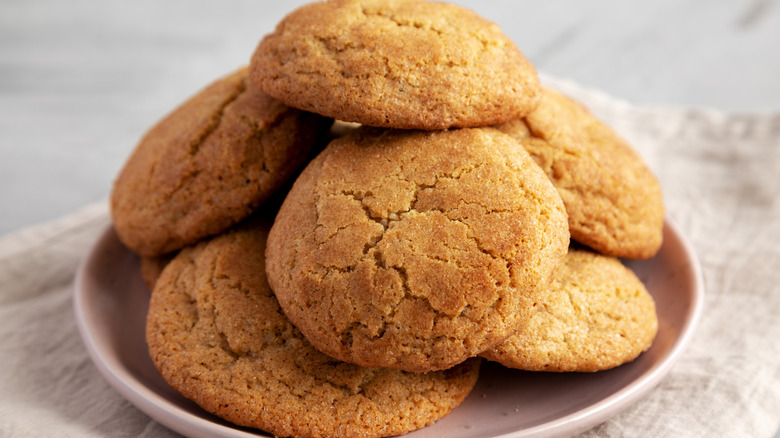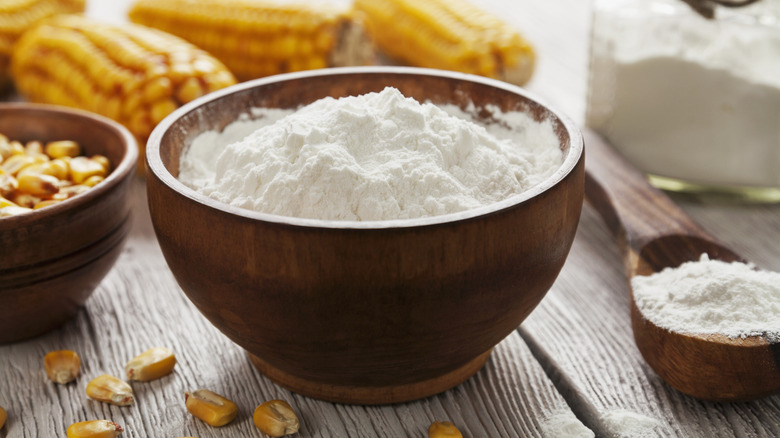Why Cornstarch Is A Key Ingredient For The Perfect Batch Of Cookies
If you've ever wondered how to achieve that signature pillowy softness that makes cookies irresistible, the answer might just be cornstarch. Cornstarch is one of the most popular and versatile thickening agents that you've likely already come across. It is the secret weapon for decadent Italian hot chocolate and an ingredient worth sprinkling into your scrambled eggs to make them better. For Dennis Littley, chef and recipe expert at Ask Chef Dennis, cornstarch is not only a useful addition to consider but also the secret weapon for the soft and chewy cookies you've been trying to perfect.
Littley told Food Republic that when added to your cookie-making routine, cornstarch is guaranteed to make an impression. "Cornstarch helps bind the dough and creates a tender, delicate crumb by reducing gluten development," Littley explained. Cornstarch tenderizes gluten and serves as an almost pure starch that increases liquid absorption in a dough mixture. The less liquid is there in the dough, the more difficult it is for gluten to form in the first place.
Chef Littley also noted that omitting cornstarch completely would mean losing some of the ultra-soft texture. The appeal of using cornstarch is that it prevents cookies from spreading out while baking, which keeps them dense and soft rather than thin and crisp. This is what leaves you with that signature soft texture to sink your teeth into.
Tips for using or swapping out cornstarch to upgrade your next batch of cookies
When adding cornstarch to your cookie mix, a little goes a long way. Spooning in as little as two teaspoons to your dry ingredients is enough to notice a difference. To ensure that your cookies are as tender as possible, it's best to experiment with your cornstarch measurements until you get your cookie batch as soft as your heart (and mouth) desires.
In case you haven't got any cornstarch in your pantry or you're simply curious about other ways to achieve a fluffy batch of cookies, there are a few options to keep in mind. Dennis Littley suggested, "You can substitute with tapioca starch or arrowroot powder for a similar effect."
Both tapioca starch and arrowroot powder are largely tasteless thickening and binding agents. Both tapioca and arrowroot are better than cornstarch when you're baking at lower temperatures. You can use the exact same measurement of two tablespoons to achieve a soft cookie texture.
The good news is that cornstarch, tapioca starch, and arrowroot powder are all gluten-free alternatives — an added bonus for bakers looking to enjoy soft and chewy gluten-free cookies that get the texture right. Other substitutes for cornstarch that are probably close to hand include rice flour and potato starch. Potato starch and rice flour are also neutral-tasting alternatives, which means they won't get in the way of the rich flavors blended into your cookies.


